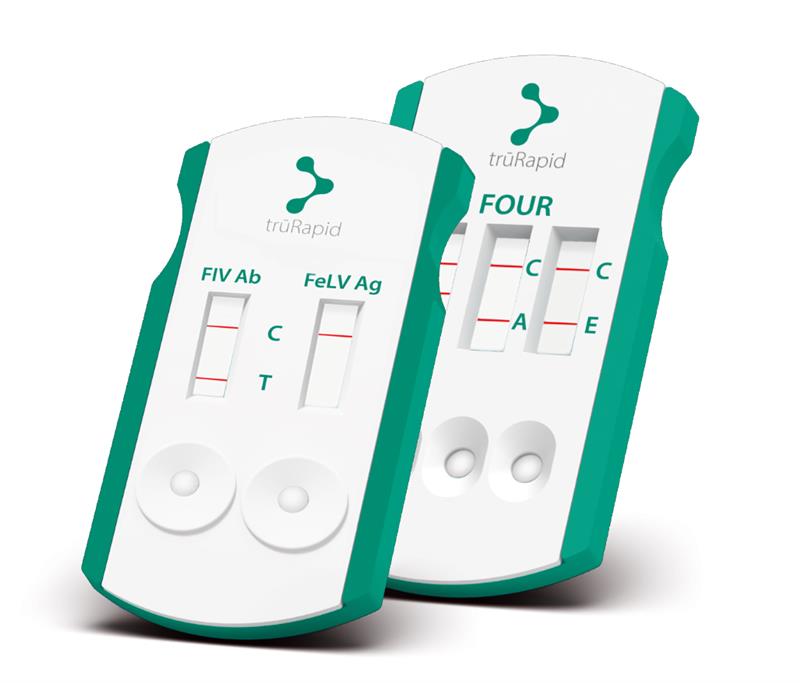The ABCs of APPs: Assessing Inflammatory Disease with Acute Phase Proteins

By Holly Brown (DVM, PhD, DAVCP), Chief Veterinary Educator
In veterinary medicine, recognizing, diagnosing, and trending inflammatory disease is one of the most important things done in the medical workups of sick patients. Yet histories can be vague, a physical exam is limited, and animals can present reactive and stressed (mimicking potential inflammatory disease) and other times mask their inflammatory conditions.
How many times have clinicians heard owners say something like, “I feel silly because they were acting sick/lame/lethargic at home, but now they seem fine.” It can be tricky to assess inflammatory disease based on how a patient presents and baseline examination, so capturing timely objective information becomes extremely important.
Additionally, understanding the progression of inflammatory disease—whether it’s on the rise or resolving—isn’t always straightforward with many of our current metrics (patient attitude/appetite, temperature, routine CBC results, etc.). While veterinary health care teams have many tools in the toolkit for evaluating inflammation, there’s one (sometimes overlooked) standout tool that is the hallmark of inflammation: acute phase proteins (APP).
Recognizing Inflammatory Disease
When thinking about objective data for inflammatory disease, it’s natural to think about hematology and the classic inflammatory leukogram that we’re taught in school: a leukocytosis characterized by neutrophilia +/- a monocytosis. But when it comes to hemodynamics and the tissue demand for inflammatory cells, and the bone marrow’s ability to meet that demand, an individual CBC only captures a moment in time of the cells’ transit through circulation and may not accurately predict the current inflammation affecting the tissues.
Consider a case of aspiration pneumonia: A dog’s CBC before they’ve aspirated shows no inflammatory leukogram (no leukocytosis, and neutrophil count is within the reference interval). Then they aspirate. Moments later, no change. But as the inflammatory cytokines are released from the lungs acting on infection and debris, they call the neutrophils to the source of inflammation. There’s now another moment in time when the neutrophils have left the blood for the tissues and the WBC and neutrophil counts can be low, yet there is intense inflammatory disease. Then the marrow releases a storage pool of mature segmented neutrophils to replace those that are lost – and, again, the CBC numbers may be now unremarkable. But now the bone marrow is ramped up and, in response to the continued cytokine production calling more neutrophils, will release immature neutrophils rapidly because they’re needed. So young neutrophils—bands, maybe metamyelocytes or earlier precursor cells—are then evident in circulation. Regardless of the overall numbers (high, low, or within the reference interval), the increase in immature neutrophils supports demanding inflammatory disease.
It’s All About the Bands
So how do you recognize bands? It may sound easy, but it’s not always. Even the same cell evaluated by five clinical pathologists may be interpreted differently. That’s in part because there’s variability from person to person based on how they were trained, by whom (which mentor) they were trained, and their clinical experience. For a veterinary clinician treating inflammatory disease and needing to decide whether a case is getting better or worse, responding to treatment or not, a blood film review and attempt at identifying and quantitating bands is commonly inadequate. The hallmark of inflammatory disease is detecting bands, and yet there’s not a great objective way to do that at the scope.
Some hematology analyzers can use certain characteristics of a cell to identify their immaturity, and that can help identify these left-shifted cells and help identify inflammation. But often clinicians don’t have direct access to those band numbers and there’s still a person’s interpretation layered on top, which adds subjectivity.
While it’s important to look at and evaluate the traditional tools in the inflammation toolkit—CBC patterns, cytograms, and blood film review—there is another option for assessing and trending inflammatory disease: acute phase protein (APP) measurement.
Why Acute Phase Proteins Matter
When used appropriately, APPs can be a very effective tool to identify systemic inflammation, providing a discrete number that can be evaluated against a reference interval of health and then trended to evaluate clinical response. In the body, an inflammatory stimulus occurs when tissue injury or infection activates monocytes and macrophages that then release cytokines. Cytokines do many things, but in particular they affect the liver, affecting the release of APPs.
These APPs are plasma proteins primarily produced by the liver as part of the acute phase response, and there are both positive APPs that are upregulated with inflammation and negative APPs that are downregulated during inflammation. APPs are not stored in the body, so their levels are a good reflection of the current inflammatory process, and they can be a great target for measurement to accurately diagnose and trend systemic inflammatory processes in our patients.
The A to Z of APPs
Major positive APP levels are negligible in health and rise at least tenfold in response to inflammatory cytokines. These proteins rise sharply within hours and will similarly start decreasing within hours as the inflammatory stimulus resolves. As such, clinicians can sensitively assess and track active increasing or decreasing systemic inflammatory processes with trended APP measurements.
In dogs, the most commonly measured APP is C-reactive protein (CRP; available both at the reference lab and on in-house analyzers), and the major APP in cast is serum amyloid A (SAA), which is not currently available at the reference lab or in-house.
Panzer’s case study is a good example of the importance of trended measurement of the APP called C-reactive protein (CRP).
Case Study: Treating Panzer’s Pneumonia Doldrums
Panzer, a senior male neutered Schipperke, had gotten into the garbage, and his owner then saw him vomit and aspirate. Panzer was treated for aspiration pneumonia, an intense inflammatory disease, at his regular veterinary clinic. Panzer had been hospitalized for three days, receiving IV antibiotics and fluid therapy, but he was not clinically improving so he was referred to a specialty hospital for elevated care.
Panzer was hospitalized for several more days for continued treatment of his pneumonia. He remained depressed, however, and wasn’t eating well at the hospital. His owner grew concerned he was suffering and spoke to his doctor about whether they should consider euthanizing Panzer. Panzer’s tests over the three days he had been hospitalized showed subtle changes, not necessarily in the numbers of the leukogram, but in the distribution of the cells—there was less of a left shift, less toxicity. Those subtle changes suggested Panzer’s infection was, indeed, improving, but behaviorally he was not showing it. The veterinarian then recommended getting more objective data to drive further decisions – in particular, trended measurement of the acute phase protein, C-reactive protein (CRP).
Over the three days he had been at the hospital, Panzer’s CRP had decreased by more than 50%, putting Panzer reasonably close to resolution of his systemic inflammation. Panzer’s veterinarian and owner discussed the possibility that he may be depressed because he’d been hospitalized for so many days, and perhaps he might perk up if he were home with his family. Considering the promising test results, including the CRP data, Panzer went home for a night to see if he improved. Panzer did improve significantly in the comfort of his own home and made a full recovery alongside his family.
The Key to Using APPs Effectively
A number of different tools are available to determine how sick an animal is when they present on emergency or as “ADR” (common abbreviation in veterinary medicine for Ain’t Doin’ Right, meaning something is off, but it is not clear what the exact problem is). Hematology is good for assessing health versus illness, and chemistry panels provide a look at organ disease and function, among other things. Urinalysis is always important to pair with the other tests. And, of course, imaging is crucial in many circumstances, as well.
Measuring APPs, though, gives practitioners another useful tool that can assess the systemic inflammatory process and provide an objective, numerical measurement. Those results allow for confident characterization of the current level of systemic inflammation, as well as then enabling the practitioner to trend that value to more objectively assess response to treatment. [Note: When trending any of these data points—whether it’s CRP or another one of the APPs—it’s important to use the same instrument as there can be variability between analyzers and between labs.]
While APP measurement is a very sensitive marker for systemic inflammation, it’s not specific—there may be tissue trauma, infection, autoimmune disease, etc. Something is stimulating the systemic inflammatory response and the APP production. So, the key is to use APPs to objectively identify inflammatory disease and then focus further diagnostics to uncover the cause. Once established, APP values can then be trended as an in-time measurement of response.
Interested in hearing more about APP? Please listen to our Queues du laboratoire podcast episode: The ABCs of APP wherever you get your podcasts.




